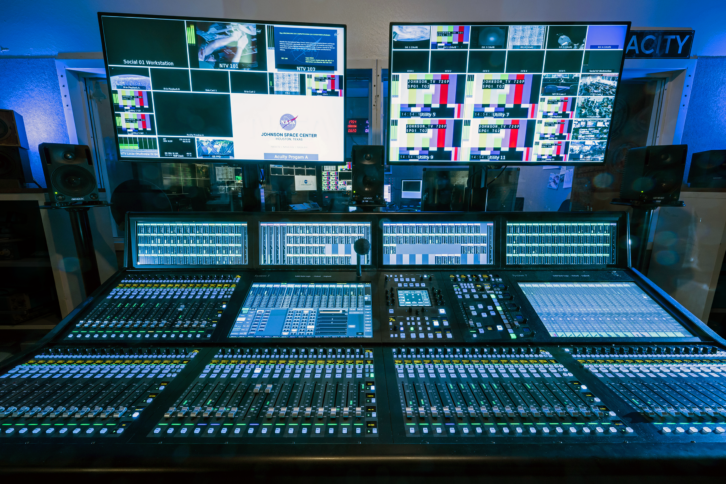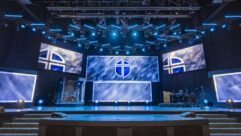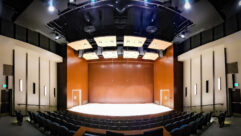
A Solid State Logic System T broadcast audio production platform has been installed at NASA’s Johnson Space Center in Houston, Texas, where it supports the Communications and Public Affairs Office’s two-time Emmy Award-winning NASA Television operations. The new System T S500 large-format modular mixing console and TE2 Tempest Engine provide routing, mixing, and processing of all broadcast audio sources for NASA TV’s multi-platform programming, which includes coverage of all human and un-crewed space missions as well as a continuous live stream from the International Space Station.
The 80-fader System T S500 console is installed in the Audio Control Room (ACR) at the Communications and Public Affairs Office (PAO), which is linked to the Mission Control Center, a location that has served as the nerve center of American human spaceflight since June 1965. The console is also used for TV programming for outside media as well as third parties such as Boeing and SpaceX LD Systems in Houston, which provides audio, video, and lighting solutions for live event production, sales, integration, and service support, supplied and integrated NASA’s new System T. In addition to the S500 console, the system includes three SSL Network I/O D64 AES-to-Dante conversion boxes, eight A32 analogue line I/O boxes and two SB 32.24 mic/line Stageboxes.
The new SSL S500 console not only replaced an older mixing desk but has effectively supplanted the previous routing workflow by becoming the audio nexus for all live television productions. Rather than relying on a dedicated router, all audio sources and signals now pass through the desk and are routed via the System T software.
The System T console is operational 24/7 and has not been powered down since it was commissioned in February 2023. The console stays in a 24/7/365 uptime posture, as a mix of Mission Audio is created by and broadcasted from the console to public streaming platforms. The console is also used to create the audio program for press conferences, live interviews between a ground-based participant and an orbiting crew member, and for coverage of dynamic spaceflight activities such as spacewalks and launches of crewed missions to the ISS.
System T’s scene automation capabilities enable each audio operator to tailor the workflow according to individual preference, in terms of console layout and the way that sources are mapped to the S500 surface, for example. Since NASA TV programming and associated press conferences can be dynamic, this functionality allows an audio engineer to easily build a new mix and, as one example, accommodate the introduction of a remote subject matter expert.
System T’s processing is widely employed to reduce noise, especially from the locations that utilize analog audio connections over longline copper. The console’s noise mitigating tools include high- and low-pass filtering, and System T also offers an Automix feature that can help deliver clean audio in noisy environments. NASA employs System T’s noise gate feature to duck one feed in favor of another, sometimes in stacked ducking scenarios.









